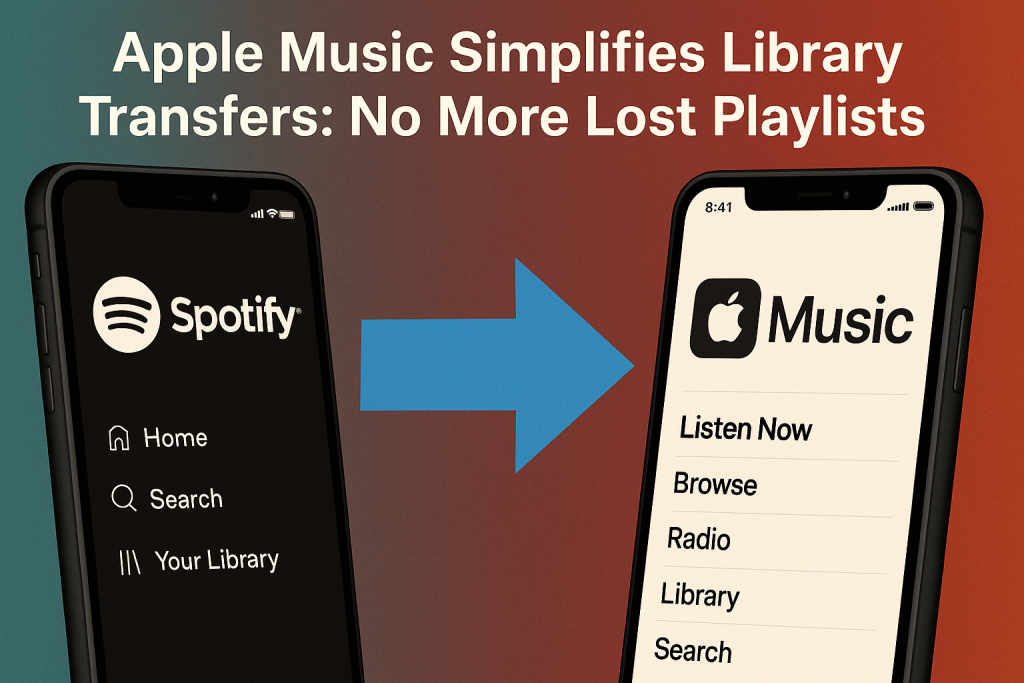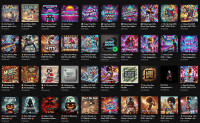In a move that could redefine how users switch between streaming platforms, Apple Music has unveiled a new feature called “Transfer Music from Other Music Services”, making it easier than ever to import songs, albums, and playlists from competitors such as Spotify, YouTube Music, or Amazon Music. The update, first reported by AP News, addresses one of the biggest frustrations users face when changing platforms — losing years of curated playlists and personal music preferences.

A Seamless Way to Switch Platforms
Until now, switching music services often meant leaving behind your playlists or relying on third-party tools like SongShift or Soundiiz. These apps, while useful, were rarely flawless and could introduce errors or omit unavailable tracks. Apple Music’s new built-in feature integrates this process directly within the app, offering a native, secure, and user-friendly migration tool.
According to Apple, the new transfer system works with major streaming services and supports the migration of:
- Playlists (both public and private)
- Saved songs and albums
- Recently played tracks and listening history
The process is as simple as signing into your old account and confirming which content to import. The transfer runs in the background, and your Apple Music library updates automatically.
Why This Matters
This update is not just about convenience — it’s a smart retention and acquisition strategy. Apple Music has been steadily growing its global user base, but convincing listeners to move from Spotify or YouTube Music often hit a major roadblock: starting over from scratch.
With this feature, Apple removes that friction, making the transition as effortless as possible. As AP News points out, it could also increase platform loyalty, as users who build extensive libraries are less likely to leave once they’ve imported and organized their full catalog.
Moreover, this feature could signal Apple’s broader ambition to position itself not just as a competitor, but as the central hub for all your music — regardless of where it started.
The Limitations
Despite its strengths, the system isn’t perfect. Apple notes that curated playlists created by the original streaming platform (such as Spotify’s “Discover Weekly” or “Release Radar”) are not transferrable, since their data is owned and managed dynamically by the original service.
Similarly, songs that are unavailable on Apple Music due to licensing differences will appear as placeholders or may not transfer at all. Still, users can manually replace these titles, and Apple’s intelligent recommendation engine will often suggest similar tracks to fill the gap.
How to Use the Transfer Feature
To access the feature, Apple Music users can go to:
Settings → Library → Transfer Music from Other Services
From there, you’ll see the list of supported platforms. Once you select your previous streaming provider, Apple Music will guide you through an authorization step, confirming your identity and permissions. The transfer process can take from a few minutes to several hours depending on your library size.
Users can also manage ongoing transfers or cancel the operation mid-process — a detail that reflects Apple’s focus on flexibility and transparency.
A Step Toward Platform Freedom
Apple Music’s library transfer tool represents more than just a new convenience — it’s a shift toward interoperability and user freedom in the streaming world. For years, users were effectively “locked in” to a single platform due to the hassle of rebuilding their music history.
Now, Apple is signaling that it values user control and accessibility. Whether you’re a casual listener or a long-time playlist curator, this innovation makes switching platforms a realistic and painless option.
![]()

















